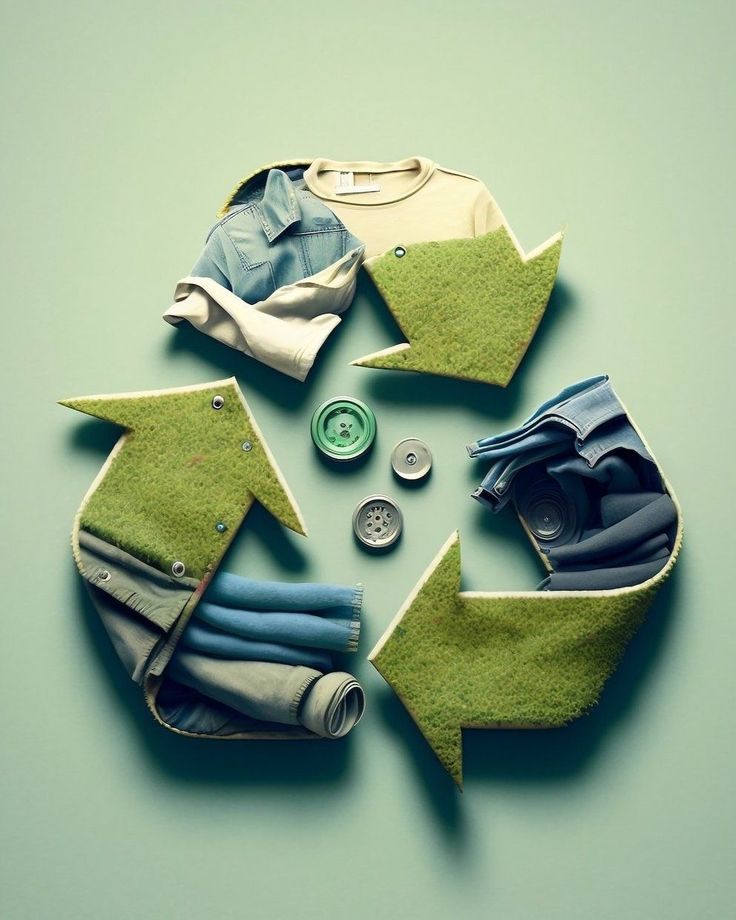Sustainable Fashion: The Movement That’s Reshaping the Future of Clothing
In recent years, the fashion industry has experienced a significant shift toward sustainable fashion. What was once seen as a niche movement has now become a central focus for both consumers and designers worldwide. With growing concerns about environmental degradation, waste, and unethical labor practices, sustainable fashion has emerged as a critical solution. But what exactly does sustainable fashion mean, and how does it impact our daily lives, the economy, and society at large? Let’s explore this game-changing movement and uncover why it’s not just a trend but a necessity for the future of the planet.
What Is Sustainable Fashion?
Sustainable fashion refers to clothing, accessories, and footwear that are designed, produced, and consumed in ways that prioritize environmental and social responsibility. This concept encompasses several key principles, including:
- Eco-friendly Materials: Using natural, organic, and renewable resources (like organic cotton, hemp, and bamboo) that have a minimal environmental impact during their production.
- Ethical Manufacturing: Ensuring that workers are paid fair wages, work in safe conditions, and are treated with dignity and respect throughout the production process.
- Waste Reduction: Implementing practices to reduce textile waste, such as recycling, reusing, and upcycling materials, as well as encouraging consumers to buy less and invest in higher-quality, long-lasting items.
- Circular Fashion: Fostering a system where clothing and accessories can be repurposed, reused, and recycled, rather than ending up in landfills.
The goal of sustainable fashion is to create a more responsible and eco-conscious fashion industry, one that helps to mitigate the negative impact of fast fashion while also celebrating creativity and individuality.
The History
While the concept has gained significant traction in recent years, the roots of this movement trace back to the late 20th century. In the 1960s and 1970s, environmental movements began to gain momentum globally, and awareness about pollution and waste started to influence different industries, including fashion.
However, it wasn’t until the 1990s and early 2000s that sustainable fashion began to take shape. Designers like Stella McCartney, who launched her eponymous brand in 2001, became early advocates for eco-friendly and cruelty-free fashion. Meanwhile, organizations like the Fashion Revolution and Fair Trade started to promote ethical and sustainable production practices.
By the 2010s, It began to enter the mainstream consciousness, especially as consumers became more aware of the environmental damage caused by fast fashion, including water pollution, waste, and carbon emissions. This shift in consumer awareness, along with the rise of eco-conscious influencers and activists, has helped propel the movement into the global spotlight.
The Daily Life Impact of Sustainable Fashion
It doesn’t just have an impact on the environment—it affects our daily lives in several positive ways:
- Better Quality Clothing: One of the most noticeable benefits of sustainable fashion is the improvement in clothing quality. Rather than buying cheap, mass-produced garments that wear out quickly, sustainable brands focus on creating durable, high-quality pieces that can last for years. This shift can save consumers money in the long run, as they no longer need to replace items as frequently.
- Increased Awareness of Consumption: Sustainable fashion encourages consumers to buy less and choose wisely. It promotes conscious purchasing decisions, encouraging people to invest in timeless, versatile pieces rather than chasing fleeting trends. This shift helps reduce overconsumption and ultimately lessens the environmental burden of fast fashion.
- Supporting Local Communities: Many sustainable fashion brands focus on local production and craftsmanship, which helps to support local artisans and communities. By purchasing sustainable fashion, consumers can feel good about supporting small businesses and helping to preserve traditional techniques.
- Reducing Waste: The fashion industry is one of the largest contributors to landfill waste, with millions of tons of clothing ending up in landfills each year. By choosing secondhand, upcycled, or sustainably produced clothing, consumers can help reduce this waste and contribute to a circular economy.
- Healthier Choices: Sustainable fashion often uses natural and organic materials that are free from harmful chemicals, which can be beneficial for your skin. Many fast fashion items are made from synthetic materials that are treated with toxic dyes or chemicals, which can pose health risks.
The Significance of Society
The rise is not just an aesthetic or consumer-driven movement—it is a societal shift that promotes more ethical and responsible living. Here’s why sustainable fashion is important to society:
- Environmental Protection: The fashion industry is responsible for a significant portion of global carbon emissions, water usage, and waste. By choosing sustainable fashion, consumers can reduce the environmental impact of the industry and help mitigate climate change.
- Ethical Labor Practices: Many fast fashion brands rely on cheap labor in developing countries, where workers are often subjected to poor working conditions, low wages, and exploitation. Sustainable fashion prioritizes fair wages, ethical labor practices, and transparency, ensuring that workers are treated with dignity.
- Promoting Conscious Consumerism: The rise of sustainable fashion encourages a cultural shift toward more conscious consumerism. It challenges the idea of disposable fashion and encourages consumers to think critically about the products they buy, where they come from, and the long-term impact they have on the world.
- Empowering Individuals: It empowers individuals to make informed choices. As consumers become more aware of the impact their purchasing decisions have on the planet, they can use their purchasing power to support ethical brands and contribute to a positive change in the industry.
FAQs
Q: How can I start embracing sustainable fashion?
A: Start by buying less but choosing better quality items. Look for clothing made from eco-friendly materials such as organic cotton, linen, or recycled fabrics. Support brands that prioritize fair labor practices and sustainable production processes. Additionally, consider buying secondhand or vintage items to reduce waste.
Q: Why is sustainable fashion more expensive than fast fashion?
A: Sustainable fashion often uses higher-quality materials, ethical labor, and environmentally friendly production processes, all of which contribute to higher costs. However, the investment in sustainable fashion pays off in the long run due to better quality and longer-lasting products.
Q: Can sustainable fashion really make a difference in the world?
A: Absolutely! Sustainable fashion helps reduce the environmental impact of the clothing industry, including carbon emissions, water usage, and textile waste. By supporting ethical brands and making conscious purchasing decisions, we can collectively drive change and promote a more responsible and eco-conscious fashion industry.
Wishing a Future for All
As we move toward a more sustainable future, fashion plays a key role in shaping how we approach consumption, ethics, and environmental responsibility. By embracing sustainable fashion, we not only contribute to the health of the planet but also promote a more ethical and thoughtful approach to the way we live. Here’s to making fashion a force for good in the world!
Conclusion: The Transformative Power
The movement toward sustainable fashion is transforming the way we think about clothing. With its focus on eco-friendly materials, ethical manufacturing, and waste reduction, sustainable fashion is not just a trend—it’s a necessary evolution of the industry. By supporting this movement, we can help protect the planet, improve social conditions, and create a more sustainable and equitable world for future generations.










